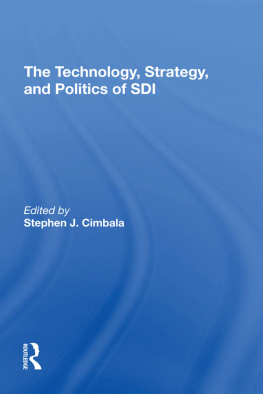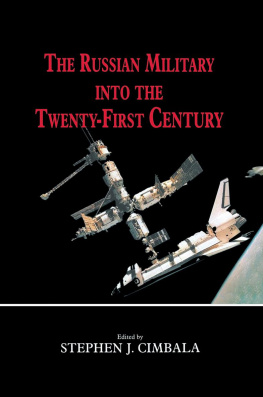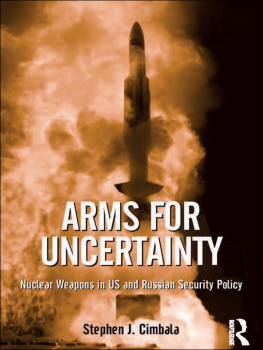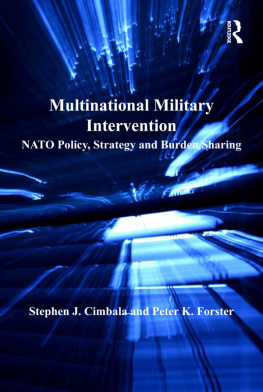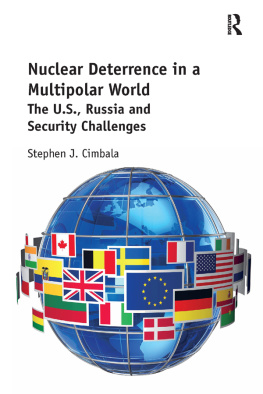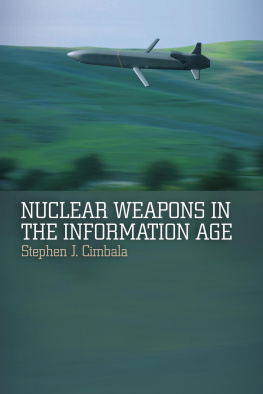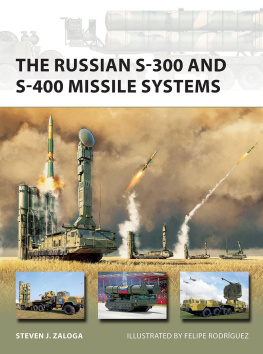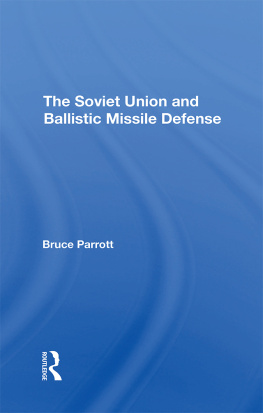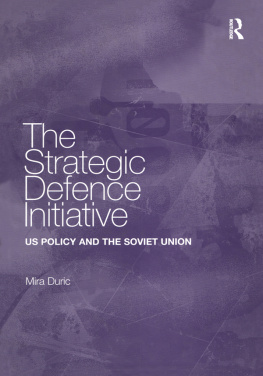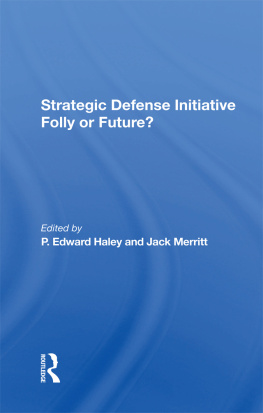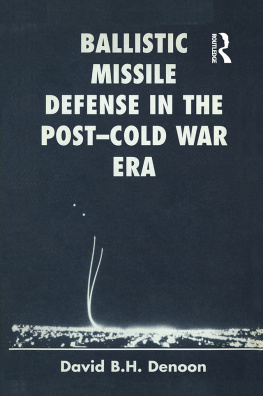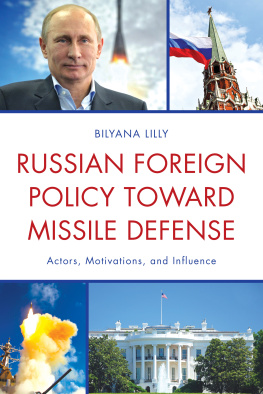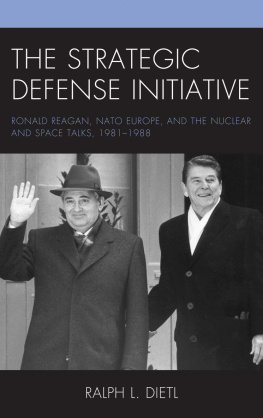About the Book and Editor
The Strategic Defense Initiative (SDI) to develop a ballistic missile defense (BMD) system has both short-range and long-range risks as well as potential benefits. For the most part, however, strategic, technological, and political issues relevant to SDI have been analyzed in isolation from one another. This book provides a more inclusive framework for assessing the possible development and deployment of a BMD system by the United States or the Soviet Union. Contributors discuss the risks for arms race stability, probable reactions of the Soviet Union to any U.S. space-based defense system, and implications for the stability of extended deterrence commitments to NATO European allies. They also evaluate Soviet research and development programs in missile defense that must be considered in any extrapolation of the requirements for U.S. deterrence in the next several decades.
Stephen J. Cimbala is professor of political science at Pennsylvania State University.
First published 1987 by Westview Press
Published 2019 by Routledge
52 Vanderbilt Avenue, New York, NY 10017
2 Park Square, Milton Park, Abingdon, Oxon OX14 4RN
Routledge is an imprint of the Taylor & Francis Group, an informa business
Copyright 1987 Taylor & Francis
All rights reserved. No part of this book may be reprinted or reproduced or utilised in any form or by any electronic, mechanical, or other means, now known or hereafter invented, including photocopying and recording, or in any information storage or retrieval system, without permission in writing from the publishers.
Notice:
Product or corporate names may be trademarks or registered trademarks, and are used only for identification and explanation without intent to infringe.
Library of Congress Cataloging in Publication Data
The Technology, strategy, and politics of SDI.
(Westview special studies in national security and
defense policy)
1. Strategic Defense Initiative. I. Cimbala,
Stephen J. II. Series.
UG743.T43 1987 358.1754 86-28096
ISBN 13: 978-0-367-29647-6 (hbk)
Contents
, Stephen J. Cimbala
PART ONE
Are Ballistic Missile Defenses Necessary? Three Perspectives
, Gary L. Guertner
Donald M. Snow
, Leon Sloss and Seymour Weiss
PART TWO
Point Defenses: Halfway House or Strategic Misdirection?
, Jonathan B. Stein
, David S. Sorenson
PART THREE
SDI and the Atlantic Alliance: Strategy and Policy Issues
, David N. Schwartz
, James C. Wendt
PART FOUR
Soviet Strategic Policy and the Impact of SDI
, Daniel Gour
, Richard E. Thomas
PART FIVE
SDI and Arms Control: Compatible or Conflictuel?
, Keith B. Payne and Patrick Friel
Stephen J. Cimbala
The editor gratefully acknowledges the assistance of Barbara Ellington of Westview Press and Diane Wolf of Pennsylvania State University, Delaware County Campus, in preparation of this manuscript for publication. Arguments by the contributors represent their personal work and not the views of the U.S. government or other employing agencies.
Stephen J. Cimbala
Stephen J. Cimbala
The U.S. dialogue on strategic defense includes disputes about matters as basic as whether it is desirable to have defenses at all. As the chapters in this book indicate, the debate about active defenses versus ballistic missile threats continues to reflect the most fundamental disagreements. Even those who think ballistic missile defense (BMD) desirable or feasible will not concur about the how and when of its deployment.
The arguments about BMD can be divided into theological and pragmatic categories. Theological disputations reflect ongoing scholarly concern about whether deterrence by denial or by punishment is more effective. In academia this debate is very polarized. One faction holds that deterrence by punishment is the only adequate basis for stable strategic nuclear deterrence between the superpowers. Another contends that mutual assured destruction (MAD) or assured retaliation is no longer credible in the face of new technologies and an ambitious Soviet challenge.

